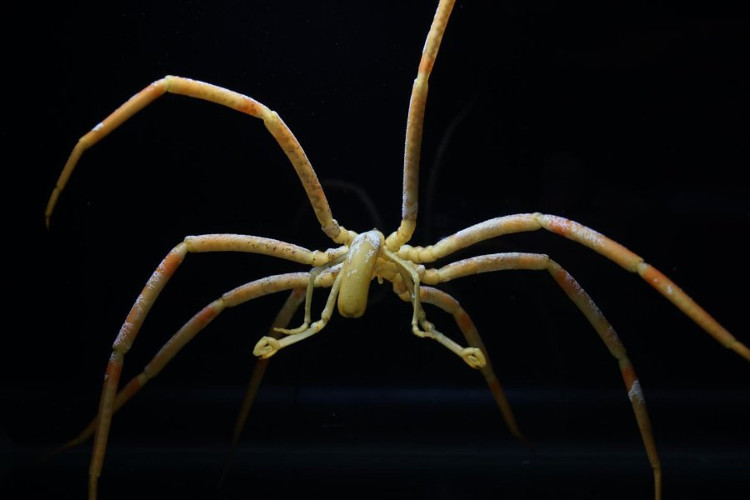Sea spider uses blood to pump blood and oxygen to feed the body
Due to the weak heart, sea spiders use the intestine to pump blood and oxygen throughout the body.
Amy Moran, ocean ecologist at the University of Hawaii, USA, said sea spiders use a heart-exchanging intestine to pump blood and oxygen to feed the body in a study published July 10 in Current Biology, according to National Geographic. .
Most animals use the heart as a circulatory pump. But the weak heart of the sea spider, like most arthropods, cannot push blood and oxygen from the end of the leg to the center of the body.
The sea spider squeezes to pump blood and oxygen throughout the body.(Video: Amy Moran).
Dyeing and tracking the blood flow among 12 living representatives of 12 Antarctic and West Coast spiders, scientists found movement like waves of food and oxygen-containing fluids, pumped in the intestinal tract. long to the end of the leg.
"Our intestines contract to push food, and many people have suggested that this movement in sea spiders is only for digestion," Moran explained. "But the sea spider uses the gut like a heart."
According to Sebastian Kvist, an invertebrate animal ecologist at the Royal Ontario Museum, Toronto, Canada, the use of a heart replacement for gut helps the spider to exchange air more effectively.
The sea spider has a large body of 8 legs, the baby's body and the nozzle suck liquid from the prey. Many important functions of this species occur in the legs."They do everything with their feet," Moran said.

Sea spiders use the gut as a heart.
Oxygen is absorbed through the outer layer of bone into the body."They have no specialized bodies for gas exchange except for a large surface area , " Moran explained. "Their gonads are in the legs, the females also hold eggs in their legs."
Around the world there are about 1,000 species of sea spiders with a body length from 1mm to 90cm. Because sea spiders have been around for 500 million years, research could help scientists understand more about the evolution of circulatory systems in many animals.
- The little things people know about spiders
- Little things to know about the human heart
- 'Six-eyed monster' and venom cause people to burst into blood vessels
- Preparing vaccines based on ... spider silk
- Spotted spiders have red fangs like blood in Australia
- Searching for traces of giant spider monsters eating humans in ancient times
- Secrets about the heart of top athletes
- Are people about to live without breathing?
- how does the bloodthirsty spider choose moof?
- Spider-like blood vessels
- Why so little bigger spiders male spiders?
- Detecting 99 million years old spider in mating posture
 Surprised: Fish that live in the dark ocean still see colors
Surprised: Fish that live in the dark ocean still see colors Japan suddenly caught the creature that caused the earthquake in the legend
Japan suddenly caught the creature that caused the earthquake in the legend A series of gray whale carcasses washed ashore on California's coast
A series of gray whale carcasses washed ashore on California's coast Compare the size of shark species in the world
Compare the size of shark species in the world